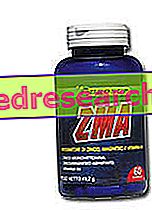
The meringues are produced by exploiting the ability of the album to trap air bubbles in a protein net; this, which from the initial volume to the final beating increases over 100%, stiffens during cooking also thanks to the support of sucrose (sugar).
Assuming that an average egg white has a weight of about 30g and knowing that the relative solution capacity for granular sugar is at most 50g, it is advisable not to exceed. Beyond this weight, the presence of sugar granules is clearly felt on the palate.
The assembly of egg whites breaks some hydrogen bonds that support proteins (10% of the total weight of the albumen) due to the mechanical action of the whisk on the compound; this mechanical process is based on a partial peptide denaturation and on the incorporation of air into the lattice.
The addition of acid components has a similar function but it is necessary not to overdo the dose, to avoid excessive denaturation or to alter the organoleptic and gustatory properties of the finished meringues.
The lowering of the pH is necessary especially when the albumen is not fresh. The alkalinization of the compound tends to prevent the formation of foam during beating and, once certain proteins change their structure (such as those of pasteurized egg white), they start to become more hydrophobic, tending to lose water.
As already anticipated, properly stirred albumen proteins have the ability to incorporate air bubbles into their mass. The greatest difficulty consists in subjecting the albumen to a sufficiently long but not excessive mechanical process; exceeding, the result could be diametrically opposed. In fact, excessively stressed ovoalbumin (protein) can change (and irreversibly) structure again, becoming unable to retain gases.
The lipid material tends to inhibit the structure of the honeycomb lattice; that's why a single drop of yolk can decrease up to 50% the potential of mounting the albumen. For this reason, any other ingredient that has a relevant lipid concentration is added only at the end of the typing process.
The choice of the processing material respects the same principle and is more oriented towards steel than plastic (difficult to degrease).
To facilitate the assembly of the egg whites it is also advisable to take them to room temperature, since refrigeration tends to prolong the foam formation times. Even better, a temperature between 50 and 60 ° C is particularly suitable for obtaining an impeccable assembly. Going beyond this threshold, the proteins are denatured excessively losing their foaming potential.
WARNING! The same is NOT true for whipped cream that uses a different foaming principle.
The addition of water can promote the lightness of meringues, which will be less compact. However, this additional ingredient must never exceed 40% of the total weight or it will be impossible to structure the honeycomb lattice.
Sugar delays the assembly process but is fundamental to the cooking of meringues; this is attributable to the fact that, in addition to dehydrating and stiffening, exceeding 100 ° C undergoes a Maillard reaction that helps to denote the aesthetic characteristics (opaque gray or amber) and organoleptic characteristics typical of meringues.
The salt facilitates assembly only in the very first phase, then it tends to hinder it (due to the separation of water); on the contrary, copper prolongs the processing time, but gives greater stability to the finished mix.
We conclude by recalling that cooked albumen and sugar are two strongly hygroscopic elements, which is why their preservation must take place only in airtight and dry containers.



